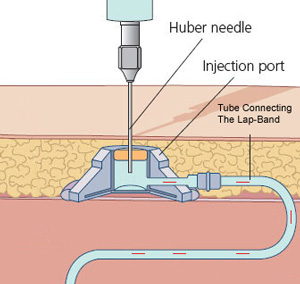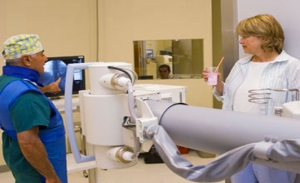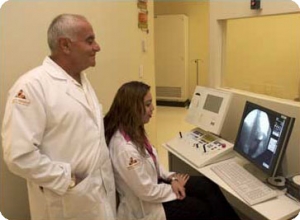 An adjustment, or ”fill” as it is more commonly known, is adding fluid to the band around your stomach. This adjustment tightens the band and makes the opening between the upper and lower portions of the stomach more narrow to slow the rate of food passing through and allow you to become satisfied and no longer hungry faster. This allows you to eat less food then you would normally consume so you take in less calories.
An adjustment, or ”fill” as it is more commonly known, is adding fluid to the band around your stomach. This adjustment tightens the band and makes the opening between the upper and lower portions of the stomach more narrow to slow the rate of food passing through and allow you to become satisfied and no longer hungry faster. This allows you to eat less food then you would normally consume so you take in less calories.
An adjustment can also mean an “un-fill”. This is done if a patient has a too tight fill, has become pregnant, or for personal reasons has requested an un-fill.
How many fills will I need?
Generally most patients require one or more adjustment during the first year to get a “just right” fill. It’s a bit of a trial and error. Every patient is different as to how they will tolerate different fill levels.
Dr. Kuri or your fill provider will determine the right first fill level for you. Subsequent fills will require your feedback as to how you are tolerating your fill.
See Is Your Band too Loose, too Tight or Just Right?
Preparation for Lap Band Fills
There should be NO food in the upper pouch when a patient arrives for their lap band fill. It is suggested that only liquids be ingested on the day of the fill procedure to flush the stoma and ensure that there is no food remaining in the pouch.
 How is the Adjustment done
How is the Adjustment done
To do the adjustment a fine specialized needle is passed through the skin into the port to add or remove saline.
Local anesthesia may or may not be needed. Most patients find that a fill is relatively painless and similar to getting your blood drawn.
The doctor may have you raise your head or feet to contract the abdominal muscles, to make the port easier to feel. The adjustment process normally takes only a few minutes.
Bringing some water with you is advisable. After the adjustment is done You will want to try drinking some room temperature water before leaving the X-ray dept. This is not a guarantee that your fill level is correct, but if water does not go down it is likely that you are too tight and can save yourself a second trip to have fluid removed, by testing this right after the adjustment.
 Why does Dr. Kuri do a Fluoroscopy?
Why does Dr. Kuri do a Fluoroscopy?
It is advisable to always have a fluoroscopy when getting a fill. A fluoroscope is just a form of a moving X-ray. The picture shows up on a monitor where the doctor can watch fluid pass through the band, and determine how much restriction is required. Some patients due to a large amount of tissue around the port site may require fluoroscopy to help locate the position of the port making it easier to do the adjustment.
 How is an Adjustment done with the aid of a floroscopy?
How is an Adjustment done with the aid of a floroscopy?
Lap Band fills are performed at our facility along with a fluoroscopy. This test allows Dr. Kuri to see the band placement and stomach before and after administering the fill, to ensure that the fill amount is sufficient to provide the restriction level required for continued weight loss. The procedure takes no more than 15 minutes on average and is relatively painless.
Recovering from your adjustment
When you leave the office the first few hours drink only liquids. If you find that water takes a while to go down or feels like it may come back up you may be too tight and should have a small amount of fill taken out. If you vomit the water you drank after your fill, it will not get better. Please, turn around and come back to the office, we will take some fluid out. If you cannot tolerate thick liquids – we need to remove some fluid. If you do tolerate a meal of thick liquids then try some soft food at your next meal (don’t push it by eating a large meal). After the 24 hours go to solid foods but remember to measure your portions.
If you have traveled some distance for your fill, You may want to stick around the area for several hours to make sure everything is OK. Or even make plans to leave the next day. This will save you the time and expense of a return trip.
Your band will be tighter so eat slowly and very small bites.
Your stomach may have swelling around the band or get a bit irritated from the fill; however, this should pass in a few days. You should always be able to take in sufficient fluids. If not, you need to return to let fluid out.

